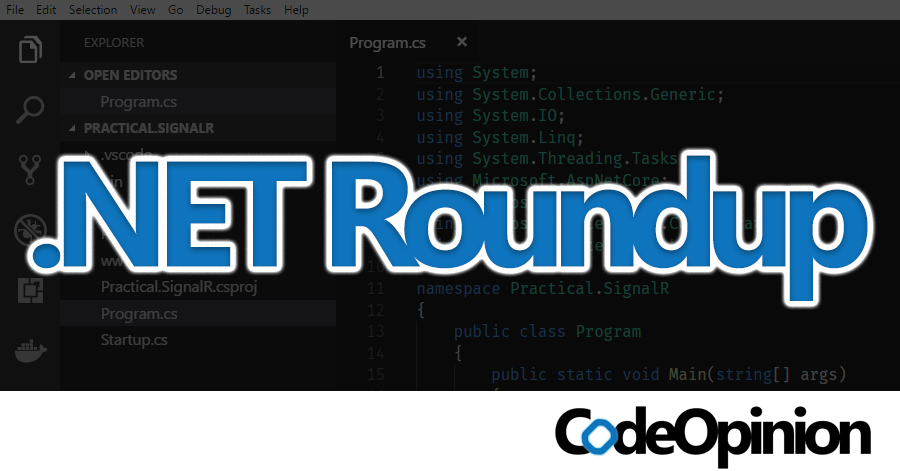Sponsor: Using RabbitMQ or Azure Service Bus in your .NET systems? Well, you could just use their SDKs and roll your own serialization, routing, outbox, retries, and telemetry. I mean, seriously, how hard could it be?

Here are the things that caught my eye recently in .NET. I’d love to hear what you found most interesting this week. Let me know in the comments or on Twitter.
.NET Core and systemd
In preview7 a new package was added to the
Microsoft.Extensionsset of packages that enables integration with systemd. For the Windows focused, systemd allows similar functionality to Windows Services, there is a post on how to do what we discuss here for Windows Services in this post. This work was contributed by Tom Deseyn from Red Hat. In this post we will create a .NET Core app that runs as a systemd service. The integration makes systemd aware when the application has started/is stopping, and configures logs to be sent in a way that journald (the logging system of systemd) understands log priorities.
Link: https://devblogs.microsoft.com/dotnet/net-core-and-systemd/
An Introduction to System.Threading.Channels
I’ve recently begun making use of a relatively new (well, it’s a little over a year old at the time of writing) feature called “Channels”. The current version number is 4.5.0 (with a 4.6.0 preview also available as pre-release) which makes it sound like it’s been around for a lot longer, but in fact, 4.5.0 was the first stable release of this package!
In this post, I want to provide a short introduction to this feature, which I will hopefully build upon in later posts with some real-world scenarios explaining how and where I have successfully applied it.
Link: https://www.stevejgordon.co.uk/an-introduction-to-system-threading-channels
screencastR – Simple screen sharing app using SignalR streaming
In this article, we will see how to create simple screen sharing app using signalR streaming. SignalR supports both server to client and client to server streaming. In my previous article , I have done server to client streaming with ChannelReader and ChannelWriter for streaming support. This may look very complex to implement asynchronous streaming just like writing the asynchronous method without async and await keyword. IAsyncEnumerable is the latest addition to .Net Core 3.0 and C# 8 feature for asynchronous streaming. It is now super easy to implement asynchronous streaming with few lines of clean code. In this example, we will use client to server streaming to stream the desktop content to all the connected remote client viewers using signalR stream with the support of IAsyncEnumerable API.
Link: https://jeevasubburaj.com/2019/08/13/screencastr-simple-screensharing-app-using-signalr-streaming/
Avoiding ASP.Net Core Configuration Pitfalls With Array Values
ASP.NET Core continues to improve on the legacy of the .NET Framework. Our team is impressed with its performance and excited about future possibilities, but change is seldom a smooth transition. In this post, I’ll explain a pitfall you may run into using the newest configuration model in .NET Core and options to mitigate the issue.
Link: https://rimdev.io/avoiding-aspnet-core-configuration-pitfalls-with-array-values/